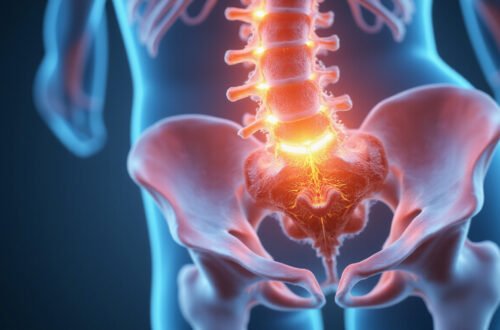Piriformis pain can be a frustrating and debilitating condition, impacting daily activities and overall quality of life. This pain stems from irritation or compression of the sciatic nerve by the piriformis muscle, located deep in the buttock region. People suffering from piriformis pain often experience sharp, burning sensations or numbness down the leg, mimicking sciatica symptoms. Understanding effective strategies to relieve piriformis pain quickly and safely is essential for managing discomfort and restoring mobility.
In this article, we will delve into proven methods for alleviating piriformis pain, including stretches, exercises, lifestyle adjustments, and treatment options designed to provide relief without risk.
Understanding the Cause of Piriformis Pain
Before exploring remedies, it’s helpful to understand why piriformis pain occurs. The piriformis muscle helps rotate the hip and stabilizes the pelvis. When the muscle becomes tight, inflamed, or spasms, it can press on the nearby sciatic nerve, causing pain and discomfort. Common causes include muscle overuse, prolonged sitting, trauma to the buttocks, or anatomical variations.
Recognizing the root causes of your piriformis pain allows you to address them more effectively with targeted strategies.
Top Strategies to Relieve Piriformis Pain Quickly and Safely
Here are some of the most effective ways to ease piriformis pain, supported by physical therapy recommendations and clinical insights.
1. Targeted Stretching Exercises
Gentle stretching helps relax the piriformis muscle and reduces nerve compression. Some of the best stretches include:
- Piriformis Stretch (Seated or Lying): Cross the affected leg over the other knee and pull the knee towards your chest while lying on your back or sitting upright.
- Hip Rotator Stretch: Sit on the floor, bend your knees, and place your feet flat. Cross one ankle over the opposite knee and gently lean forward.
- Figure-4 Stretch: Lie on your back, place the affected leg’s foot on the opposite thigh just above the knee, and pull the unaffected leg towards your chest.
Hold each stretch for 20-30 seconds and repeat 3 times daily, avoiding any movements that cause sharp pain.
2. Apply Heat and Cold Therapy
Alternating heat and cold can reduce inflammation and soothe muscle tension. Use an ice pack wrapped in a towel on the painful area for 15 minutes several times a day during acute flare-ups. Follow with heat therapy such as a warm compress or heating pad to ease muscle stiffness and boost blood flow.
3. Massage and Myofascial Release
Therapeutic massage can reduce muscle spasms and improve circulation in the piriformis region. Techniques such as deep tissue massage or foam rolling (targeting the buttocks and hip area) can break up adhesions and release tension.
4. Maintain Correct Posture and Ergonomics
Ergonomic adjustments prevent repetitive strain that aggravates piriformis pain. When sitting, ensure your hips are level and supported, feet flat on the floor, and avoid crossing legs for long periods. Using cushions or ergonomic chairs can also help take pressure off the piriformis muscle.
5. Strengthening and Mobility Exercises
Weak hip and glute muscles can contribute to piriformis muscle imbalance. Incorporate strengthening exercises such as:
- Glute bridges
- Clamshells
- Hip abductions
Improving muscle balance supports the piriformis and reduces pressure on the sciatic nerve.
6. Over-the-Counter Pain Relief
Non-steroidal anti-inflammatory drugs (NSAIDs) like ibuprofen may provide short-term relief by reducing muscle inflammation and pain. Always follow dosage guidelines and consult your doctor if you plan prolonged use.
7. Consider Physical Therapy and Medical Consultation
If pain persists longer than a few weeks or worsens, a physical therapist can design a personalized rehabilitation program. Medical evaluation is essential to rule out other causes of sciatica or nerve impingement and discuss advanced treatments like corticosteroid injections or other interventions.
Quick Reference: 7 Steps to Relieve Piriformis Pain
- Perform targeted stretches daily.
- Use ice packs for acute inflammation, followed by heat therapy for stiffness.
- Utilize massage or foam rolling on the affected area.
- Maintain proper sitting posture and ergonomic setups.
- Strengthen surrounding muscles, especially the glutes and hips.
- Take NSAIDs carefully as needed for pain control.
- Seek professional physical therapy or medical advice if pain is unmanageable.
Frequently Asked Questions (FAQ)
What are the fastest ways to relieve piriformis pain?
Quick relief can be achieved through stretching the piriformis muscle, applying ice to reduce inflammation, and avoiding activities that worsen symptoms. Combining these with posture adjustments often helps alleviate pain promptly.
How can I safely stretch to ease piriformis pain?
Safe stretching involves gentle, controlled movements without forcing the muscle. Hold stretches for 20-30 seconds without bouncing, and stop immediately if you experience sharp pain or numbness. Consistency is key for improvement.
Can piriformis pain be mistaken for sciatica?
Yes, piriformis pain often mimics sciatica since the irritated sciatic nerve is involved. However, piriformis syndrome is specifically due to muscle compression while true sciatica may originate from spinal disk issues. A medical diagnosis can help differentiate these conditions.
Expert Insight on Managing Piriformis Pain
According to the American Academy of Orthopaedic Surgeons (AAOS), a combination of stretching, physical therapy, and lifestyle modifications plays a critical role in managing piriformis syndrome effectively (source). Their guidelines emphasize conservative treatments as the first line of defense before considering invasive options.
Conclusion: Take Control of Your Piriformis Pain Today
Piriformis pain doesn’t have to control your life. By applying the effective strategies outlined—stretching carefully, managing inflammation, improving posture, and strengthening key muscle groups—you can achieve lasting relief quickly and safely. Always listen to your body, and don’t hesitate to consult healthcare professionals when needed.
Start your journey toward a pain-free life by incorporating these techniques into your daily routine. With commitment and the right approach, overcoming piriformis pain is possible—and a return to comfortable, active living is within your reach. Take that first step today!





